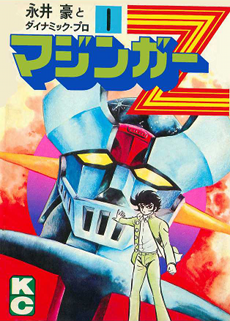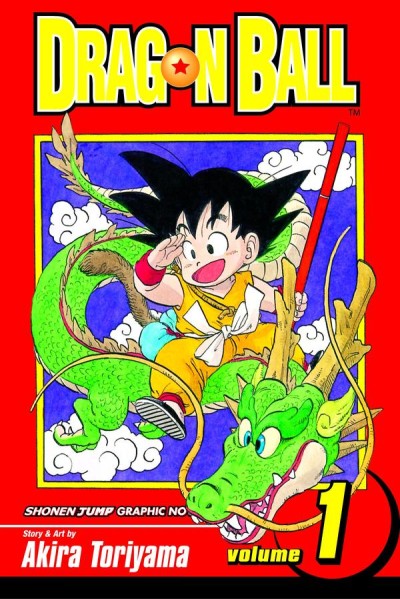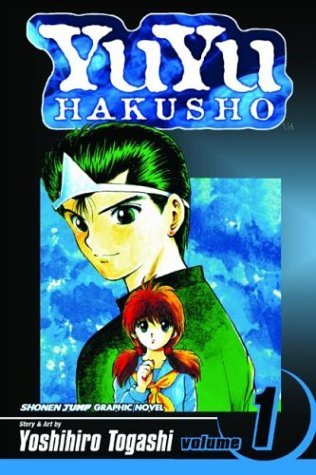Friday, November 23, 2018
Adapting to Adaptions
Stories are universal, as a rule. They are made to connect with audiences, which means their goal should be to do so on the widest scale possible for the story. But sometimes it isn't the original work that does the job. Sometimes it's the adaption of the story that ends up reaching the widest possible audience. It happens more than you would think.
In fact, let's go over some examples here.
One of the most interesting aspects of being into anime and manga is the relationship between the two.. One story transfers across two different mediums in Japan all the time. Comparing adaptions will be clearer if I talk about these.
In the early days when anime was just getting a foothold the adaptions were usually loose. Merely taking the concept and adapting what they could while adding their own ideas. In the 1970s with the advent of super robots, space opera, and fantasy, adaptions had a whole new meaning.
Some manga were made from the anime staff specifically. Go Nagai's Mazinger Z ran in Shonen Jump at the same time the anime did. Since he was the writer he knew the general plot and where it would go. It's about a teenage boy who finds a giant robot and must use it to battle the evil Dr. Hell from ruling the world. But because the anime was for spectacle and selling toys, the manga ended up not having monster of the week battles. Instead it had a rapid fire plot that rocketed from Point A to B. Whie the anime ran for 92 episodes from 1972-1974, the manga ran for 5 volumes in the same time period. The sequel series Great Mazinger did the same, running for 56 episodes from 1974-1975 and 2 manga volumes at the same time. The third series, Grendizer, is more less the same format as the other two. The last series spread across mediums, God Mazinger, is entirely different in every adaption.
Personally, I like this approach. This makes the various versions seeing for different reasons. It's engaging in a way a simple panel by panel adaption would be. But, of course, most franchises are not Mazinger Z. And despite how popular it is they are not all easily available. For instance, the western market has yet to see any of Nagai's original Mazinger manga (in my opinion, his best by far). So this tact has its downsides.
A different series that ran a similar course was the ever popular and influential Space Battleship Yamato. If you don't know, it's about the crew of a spaceship trying to find a way to defeat alien invaders of Earth. While the original 26 episode series was running, directed by Leiji Matsumoto, he also put out a manga based on the story at the same time. It ran for three volumes, and although I have yet to read it, actually has been licensed for release over here by Seven Seas. I would assume it follows the plot of the series tightly.
But in the '80s is where things changed the most. The economic boom in Japan meant a growth for many industries, but entertainment is where things really ballooned. More anime and manga was produced than had ever been produced before. Magazines, timeslots, and companies were opening up, and more productions sprang up. OVAs opened the floodgates as to what animation could do. Movies as well were at their peak. This continued into the 90s and is regularly considered the Golden Age of anime and manga. Everything sold, creativity was encouraged, and the overseas market was being cracked.
It only stands to reason that adaptions would continue in this era, and continue they did. Some adaptions were like psychic romance story Kimagure Orange Road and followed the main story while adding in their own idiosyncrasies along the way. Episodic series like City Hunter created whole new scenarios which allowed it to run longer. Post apocalyptic martial arts slobberknocker Fist of the North Star stretched out the material to create a longer anime. Others were more plain adaptions.
But the most important and popular adaption, and the most infamous, was the one for Akira Toriyama's adventure comedy Dragon Ball.
The original manga ran for 42 volumes, spit into two anime series. The first anime series covers the original 16 volumes over 153 episodes. This anime was simply called Dragon Ball. This adaption works surprisingly well despite the pacing issues one would expect. The staff added whole new events and smaller arcs (known as filler to wider anime fans) that did not interfere with Toriyama's original pacing or intent. It starts and ends strong. As a rule, this is the best Dragon Ball adaption.
The second anime series, called Dragon Ball Z, takes place after a time skip in the original manga to cover the remaining 26 volumes. However, it covers them in 291 episodes. Unlike the first series, this one succumbs to a myriad of issues. There are long stretches of episodes where nothing happens, there is a lot of filler that goes nowhere and (unlike the original anime) adds nothing to the story, and most importantly the animation is incredibly inconsistent. As an adaption it is quite weak.
It managed to succeed at the time due to Dragon Ball's manga being so good and because there was little on television like it at the time. But there is a reason it has an official edited version, Dragon Ball Kai, which cuts the fat to 159 episodes. The original Z anime is close to unwatchable today without heavy skimming.
But when we head into the 90s there are two more series worth discussing. Oddly enough they are by two different individuals who would end up marrying. The first is Sailor Moon, the second is Yu Yu Hakusho. Both are two of the biggest series of the period.
Sailor Moon is the premier Magical Girl series, created by Naoko Takeuchi in the early 90s. It's about a teenage girl named Usagi Tsukino (Serena in the North American dub) who is made a warrior for love, Sailor Moon. She fights evil creatures at night and deals with normal teenage stuff during the day joined by her friends. The story soon involves a legendary kingdom on the moon from the far past as well as a new earthly kingdom in the future. That's about the only similarity between the manga and later adaptions.
The original manga is loopy, but it's also quick paced. The entire series takes 18 volumes to complete when the original anime series takes 200 episodes and doesn't really end. The later anime series, Sailor Moon Crystal attempts to be a straightforward adaption of the manga. Despite all of this, I think the original anime is the best version of the series.
Yes, despite being full of filler episodes and arcs, as well as a lot of tangents, I feel the anime gets to the heart of the series better than the manga does. The manga is dry and fat much of the time whereas the anime adds good characterization, including character arcs for villains, as well as has much stronger direction. It's also a lot more fun. The original, and the later anime as a consequence, simply doesn't stack up.
In contrast, Yu Yu Hakusho is almost a straight adaption of the original manga, only with trims and additions of its own. Yusuke Uremeshi is a punk kid with nothing in the world. He sacrifices himself to safe a child and is rewarded with a new chance at life. He then learns there is more to the world than he first thought.
The manga starts off with many one-shot chapters centering around Yusuke helping various people in the world with their problems as a ghost before coming back to life. It also ends with two volumes of the most cynical, nasty, and stupid material in the entire series that almost ruins the entire thing. The anime trims the start of the story to get to the action quicker, and completely revamps the final arc of the series to wrap everything up with a more consistent tone and removes all the garbage. There are also other tweaks along the way such as giving a few more scenes and moments to other characters to give the series more flavor.
In this case the 19 volume manga is vastly inferior and less consistent than the 112 episode anime series. The adaption ended up saving the series from the author.
So as you can see, the differences between adaptions can be pretty extensive. In some cases, the adaption could utterly ruin the original in transition (such as Flame of Recca) or go a different way while keeping the core intact (such as Ushio & Tora), which give the consumer far more options to choose from.
This is a long way to say that adaptions really should be adaptions. They should take the original and create the best adaption possible, but the fact is that the original still exists and these are separate mediums. Changes are a certainty, and sometimes they are for the best.
My point is simply that stories can be fascinating in how many different ways they can be told. There's something universal that links even across mediums, and even despite changes that might be made. Even going over them here I am surprised at how much there is to go through.
And I didn't even cover some of the weirder examples. But that will be all for today. I have to get back to editing! Enjoy your Black Friday and watch some anime. It'll do you good.
In case you're interested, I recently had stories in issue 3 of StoryHack and in DimensionBucket Magazine. Please check them out if action, adventure, fantasy, and horror stories are your thing. They are quite good at what they do.
Labels:
anime,
manga,
storytelling,
television
Subscribe to:
Post Comments (Atom)





No comments:
Post a Comment